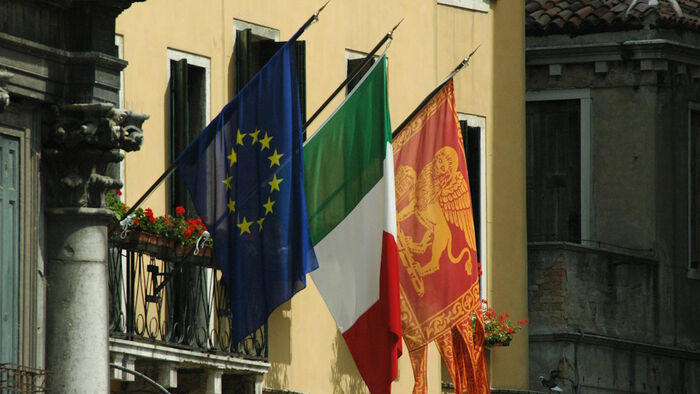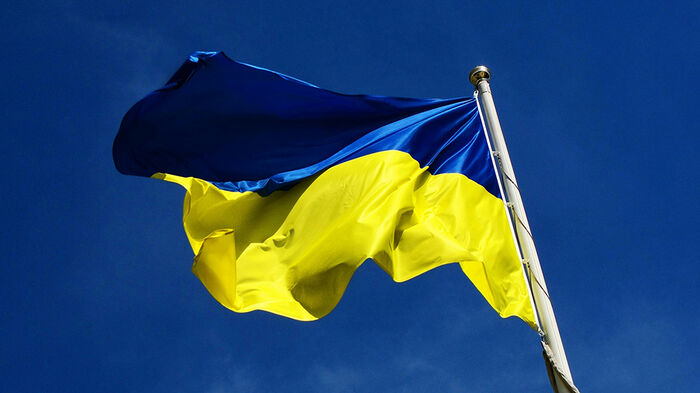The author, Kacper Rekawek, is a postdoctoral fellow at C-REX since 2021, with more than 15 years of experience in research on counterterrorism and countering violent extremism. He has previously written on the subject of foreign fighters for RightNow! here.
This post is an early attempt to assess the phenomenon of foreign fighters in Ukraine since the beginning of the Russian invasion on 24 February this year. I have researched foreign fighters bound for Ukraine since 2014, and am currently engaged in a research project examining their post-war lives. Here, in twelve short points, the most important aspects of the current “wave” of foreign fighters in Ukraine are explained.
1. Foreign volunteers, not foreign fighters
David Malet, a specialist in the study of foreign fighting and volunteering, has already pointed out that the individuals heading to Ukraine are volunteers, not fighters. Rather than joining an insurgency, or a rebel group, they end up in Ukraine’s formal military forces. They do this in a haphazard, and seemingly disorganised manner but nevertheless this is in order to join the ranks of the International Legion of the Territorial Defence, and not rebel “militias”. Therefore, the situation is different from the one in 2014, when individuals flocked to Ukraine’s volunteer battalions or the “separatist” (Russian) militias, i.e. non-state organisations. Back then they could have been called foreign fighters in Malet’s understanding, but not today.
2. Public relations exercise
Ukraine announced the formation of the International Legion when it seemed likely that Kyiv would fall within days. More than two weeks later Kyiv is still standing, and what looked like a last roll of the dice by the Ukrainian government should now be seen differently. This is clearly an attempt to internationalise the conflict via the mobilisation of Western individuals for the Ukrainian cause. This development also functions to embarrass Western governments, who in the eyes of many Ukrainians are not doing enough to support Kyiv. Naturally, Ukraine also perceives the fallout or the potential risks of such a mobilisation differently from its Western supporters. The country is engaged in a life-or-death struggle, and it is unlikely to respond positively to Western perorations about for instance the volunteers being “radicalised” in Ukraine. Continued musings on this supposed risk feeds directly into Russian arguments: Ukraine, supposedly a failed “Nazi” state, is effectively fielding Western far-right mercenaries to fight Russia.
3. Scale matters
Compared to the 2014 foreign fighter mobilisations, the foreign volunteer mobilisation of 2022 is considerably larger. In 2014 the call to arms - issued by both sides - with different degrees of intensity, was hardly popular, and was answered by a few hundred Westerners at most. This time, at least from the outset, there are thousands of individuals “applying” to join the so-called International Legion of the Ukrainian Territorial Defence. Of course, measurement of this interest, e.g. through e-mails and inquiries to the Ukrainian embassies around the world, mostly located in the West, is far from perfect. But the reports emerging from Lviv, a convergence point for these volunteers, and Kyiv, the place where they will most likely be deployed, have already indicated a significantly larger movement of volunteers than that of the 2014 fighters.
4. Ideology does not matter.
At first glance the 2014 mobilisation appeared more ideological. It saw a higher number of “political” individuals either from the far-right and even the far-left attracted to the conflict, constituting a higher percentage of all fighters. (This issue is addressed in detail in my forthcoming monograph). In some cases their mobilisation for the war was clandestine. It was not performed openly, and not advertised, since some of the fighters were keen not to attract media attention, researchers (like myself), or their own countries’ authorities. The situation is completely different now. Politics comes up rarely, if at all, in the online chat discussions of the aspiring fighters. This is almost a global, or at least Western, social movement of people either saying they would go, or actually going to Ukraine.
5. War or no war
The intensity of the 2014 mobilisation was short-lived. The fighters arrived throughout the summer of 2014, and most of them were gone from Ukraine in 2015, although some returned later, with a small group settling in Ukraine permanently. They mostly departed since little was happening on the frontline, and the war was largely reduced to a series of skirmishes around fortified trench lines. Opportunities for “glory” in such conditions were minimal, and this seriously thinned the ranks. At the same time both sides took steps to professionalise their forces and incorporate the bottom-up organised volunteer battalions into the Ukrainian National Guard or, in the case of the “separatists,” into the “army corps.” This effectively ended foreign fighter recruitment, and very few (new) foreigners joined either side after the end of 2015. Current developments should also be viewed accordingly, and we should ask what will happen if the war is no longer about movement, and relatively stable frontlines develop. In that case we could theoretically expect dampened enthusiasm for foreign volunteering.
6. Veterans
One small community which was energised by the Russian invasion of Ukraine was the pro-Ukraine foreign fighter veterans. Some decided to return to Ukraine, and a few made it to Mariupol to fight alongside the Azov Regiment in the currently besieged city. On social media veterans can also be found, advising interested parties on how to fight in a foreign war. As such, they act as facilitators and enablers of foreign volunteer recruitment. Critically, they know the terrain, the key players, and the reality of war on the ground in Ukraine. As will be shown, Ukrainian units that include these veterans are the most likely to be successful in attracting larger groups of foreigners.
7. Contracts and conditions
There are certain questions which recur in the exchanges between volunteers. These mostly concern a) logistics, b) conditions on the ground, and last but not least, c) contractual conditions of service. Answers to the questions vary, also showing that this could be a relatively short-lived, albeit intense, phase. There are obviously concerns about operational security while in Ukraine, and worries about whether volunteers would be able to “make their mark”. Concerns as to whether the International Legion would take anyone, even people without combat experience, abound. There are also indications that the length of service is an issue, as most volunteers do not want to be locked into serving in Ukraine for too long. It seems that certain units try to be flexible on this last point, to help recruit volunteers to their ranks.
8. Old-timers
These units are entities which have existed in Ukraine since 2014 onwards, with a track record of foreign fighter recruitment which long predates the 2022 mobilisation of volunteers. These are e.g. Azov (more on this unit below) and the Georgian National Legion (GNL). In a way, they have largely been preparing for this moment for almost eight years, and one should not be surprised that they are first off the block in the recruitment efforts of foreign volunteers. They are well-drilled, professional, and approachable; to many they seem like the easiest option. The GNL claims to now have hundreds of fighters around Kyiv, but it will take time to verify these claims.
9. Azov
A majority of media inquiries about the foreign volunteers in Ukraine directed to me personally concerns one particular Ukrainian socio-political entity: the Azov movement. Azov was founded in 2014, at the time as one of many volunteer battalions fighting on the Ukrainian side. Since then, due to its ideological roots in the Ukrainian far-right, shameless use of extreme right symbolism, and the anti-LGBT and anti-Roma activities of some of its activists, it has received disproportionate attention from external observers. Additionally, the Azov Movement is often confused with the Azov Regiment, a regiment of the Ukrainian National Guard, which is under state control. Some of the more politicised veterans of the regiment started a political party (Natsionalnyi korpus or National Corps), and a variety of initiatives, projects, and other entities tied to the political operation, all under the nominal umbrella of the “Azov movement”. The movement likes to speak of the Regiment as “its own”, but has no control over its activities, nor does it recruit into the regiment’s ranks. However, the movement does call for recruits into what it considers its own Territorial Defence battalions operating around Kyiv. These units are dominated by Azov Regiment veterans residing in Kyiv, who in February 2022 decided to fight, much like thousands of other Ukrainians serving in a multitude of non-Azov Territorial Defence forces. The Azov Movement has also attempted to form its own foreign volunteer unit, but this effort has so far largely resulted in recruits in the low dozens.
10. Nazis?
Some far-right sympathisers are discussing plans to go to Ukraine to fight Russia, with the latter portrayed as a force which unleashes Muslim (i.e. Chechen and non-Slavic Eastern Military District recruits) forces against a sovereign, European nation. However, in 2014 some of these same people argued against an independent Ukraine on the grounds that it was a US puppet state, standing in the way of Russian expansion. For many on the far-right, Russia appeared to be a country led by a master strategist who was restoring Moscow’s glory while standing for tradition, Christianity, and sanity in a liberal, decadent world. Furthermore, it is not only the far-right which is talking about volunteering for Ukraine. “Concerned citizens of the world”, as one Ukrainian involved in foreign recruitment expressed it in a personal conversation with the author, are the order of the day, and they come from different walks of life.
11. “Plan? There is no plan.”
The enthusiastic mobilisation of such “citizens” comes with several drawbacks. The arriving fighters have to improvise, as do the Ukrainian authorities, which are only just learning how to accommodate the foreigners in the armed forces. These are potentially in the high hundreds, if not thousands. This only strengthens the chaotic manner in which this mobilisation is unfolding, with gossip flooding the proverbial airwaves. There are already cases of returnees, i.e. volunteers who returned because a) they were apparently “appalled” by disorganisation on the Ukrainian side and the relative lack of priority this gave to training, arming, and deploying its foreign volunteers and b) were turned back by Ukrainians who prioritise people with combat experience. This adds to some of the frustration in the aspiring volunteer community which is, as said, not homogenous.
12. “Exotic” inputs
Russia allegedly has its own volunteer/foreign fighter community, and it is likewise by no means homogenous. It is however finding it hard to deploy its alleged volunteers or foreign fighters – in reality mercenaries – into new ad hoc units, or to simply make up for casualties in its ranks. Rumours about the arrival of Syrian fighters, and declarations of loyalty from certain Central Africans are, for now, background noise. Time is required to assess whether this is indeed purely a public relations stunt to counter the genuine pro-Ukraine mobilisation.
You can read more about Kacper Rekawek's research on this topic in his forthcoming monograph, Brown-Red Cocktail. (Extremist) Foreign Fighters in the War in Ukraine, due to be published later this year with Routledge.
.jpg)




